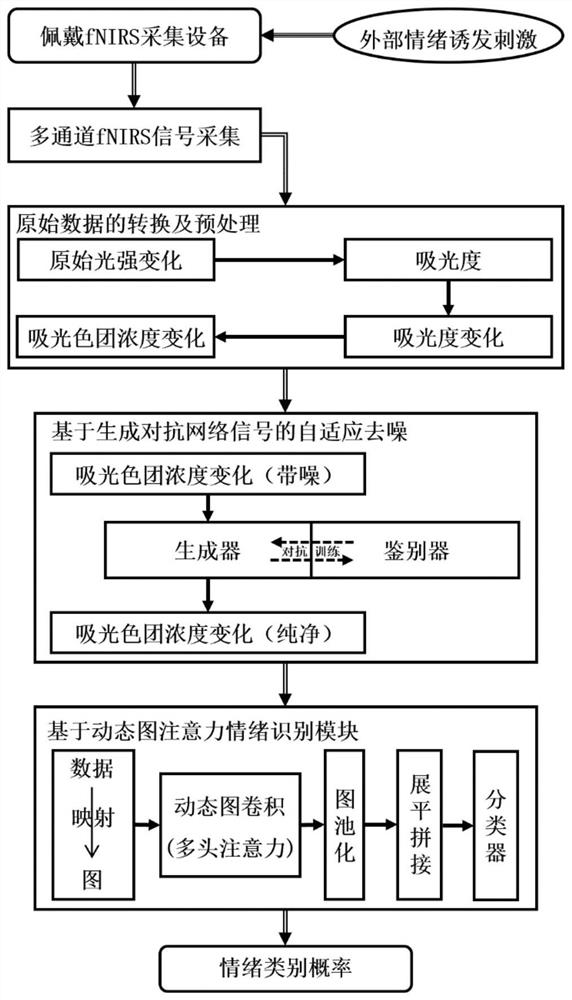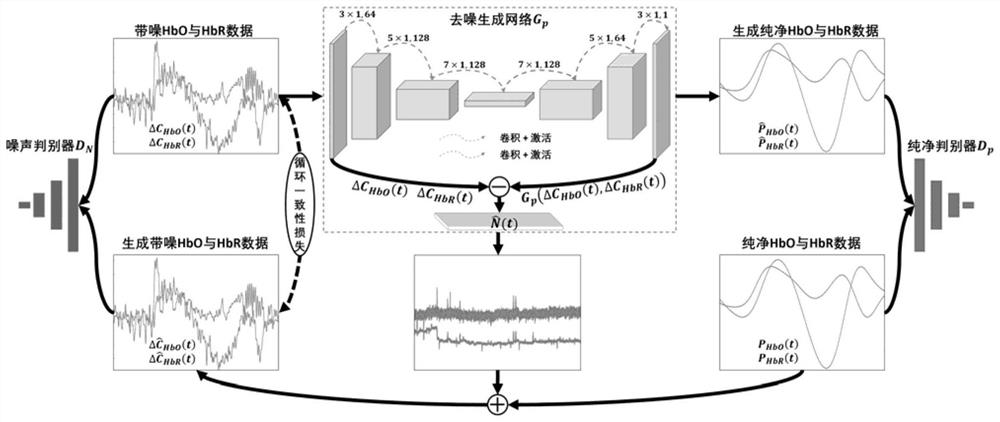FNIRS emotion recognition method and system based on graph network and adaptive denoising
An emotion recognition and adaptive technology, applied in the field of human-machine signal recognition, can solve the problems of low temporal or spatial resolution, high cost of acquisition equipment, and susceptibility to interference, etc., achieve strong generalization ability, avoid manual participation and experience analysis , to overcome the effect of limited dimensions
- Summary
- Abstract
- Description
- Claims
- Application Information
AI Technical Summary
Problems solved by technology
Method used
Image
Examples
Embodiment 1
[0072] A fNIRS emotion recognition method based on a graph network and adaptive denoising, suitable for the emotion recognition task of an fNIRS acquisition device, mainly includes an external emotion stimulation step, an fNIRS acquisition step, an fNIRS adaptive denoising step, and an fNIRS emotion recognition step.
[0073] In the external emotional stimulation step, the external emotional stimulation material adopts videos of six emotional label types of anger, disgust, fear, happiness, sadness, and surprise, and the user induces emotions by watching the video.
[0074] Such as Figure 4 As shown in the fNIRS acquisition steps, the fNIRS acquisition device consists of a multi-channel dual-wavelength near-infrared continuous wave transmitting-receiving source.
[0075] First, the user wears the fNIRS acquisition device to collect and record the changes in light intensity of different optodes before and after emission-reception in real time.
[0076] Let the single-channel l...
Embodiment 2
[0098] A fNIRS emotion recognition system based on graph network and adaptive denoising, including:
[0099] fNIRS acquisition module: use fNIRS acquisition equipment to continuously collect the change of light intensity before and after emission-reception, convert the change of light intensity into the change of absorbance, and further obtain the relative change of oxygenated hemoglobin and deoxygenated hemoglobin concentration;
[0100] fNIRS adaptive denoising network module: used to obtain pure signals;
[0101] fNIRS Dynamic Graph Attention Emotion Recognition Network Module: Output emotion labels based on pure signals.
Embodiment 3
[0103] A computer device includes a memory, a processor, and a computer program stored on the memory and operable on the processor, and the processor implements the steps of the fNIRS emotion recognition method when executing the computer program.
PUM
 Login to View More
Login to View More Abstract
Description
Claims
Application Information
 Login to View More
Login to View More - R&D
- Intellectual Property
- Life Sciences
- Materials
- Tech Scout
- Unparalleled Data Quality
- Higher Quality Content
- 60% Fewer Hallucinations
Browse by: Latest US Patents, China's latest patents, Technical Efficacy Thesaurus, Application Domain, Technology Topic, Popular Technical Reports.
© 2025 PatSnap. All rights reserved.Legal|Privacy policy|Modern Slavery Act Transparency Statement|Sitemap|About US| Contact US: help@patsnap.com



